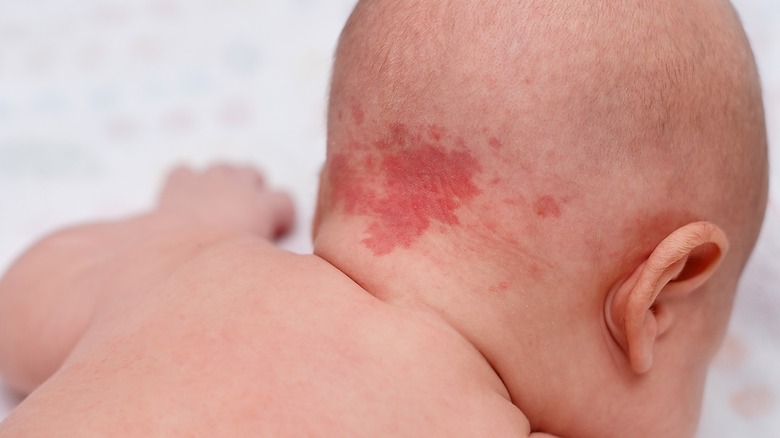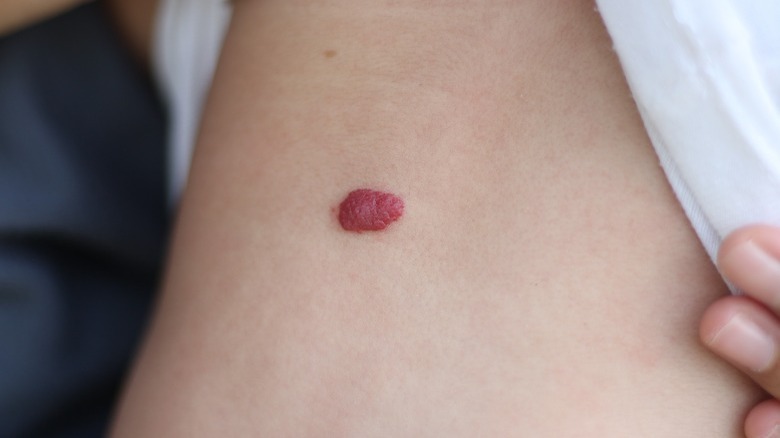What Does It Mean If You Have A Strawberry-Colored Birthmark?
Johns Hopkins Medicine says that birthmarks are areas that are discolored or have raised skin. While people with birthmarks may face social stigmas, birthmarks are commonly found in more than 10% of babies, according to Healthline. Birthmarks typically appear at birth or shortly thereafter. Some birthmarks may become more noticeable over time, while others may retreat or even disappear, notes WebMD. While most birthmarks are harmless, it is advisable to have a birthmark examined by a doctor, as some can lead to further issues.
There are two common types of birthmarks. Pigmented birthmarks appear when pigment cells continue to grow, which creates colors like black, blue, or brown, says KidsHealth. On the other hand, vascular birthmarks stem from issues with blood vessel formation. For example, there may be an excess of blood vessels. These types of birthmarks are usually red or pink in color (via Healthline). Here's everything you need to know about a type of vascular birthmark that causes a strawberry-colored mark.
Strawberry hemangioma: symptoms and statistics
If you have a strawberry-colored birthmark that appears on the back, chest, face, or scalp, then you may have what is called a strawberry hemangioma, explains Healthline. However, the strawberry hemangioma could appear anywhere on the body. It is caused by the overgrowth of blood vessels (via WebMD). The birthmark is not actually a birthmark, but technically a noncancerous tumor, says Cleveland Clinic. However, it can still cause issues, especially if the hemangioma grows near the eyes or mouth, where it could pose as an obstruction (per American Academy of Dermatology Association). They appear in an estimated 2% of babies and may disappear by age 9 (via WebMD).
While most commonly found in babies, these marks can form during adulthood. When they do form in adults, it is called a cherry angioma (per Cleveland Clinic). It is estimated that 75% of people over the age of 75 have them. Notably, cherry angiomas do not typically fade away.


